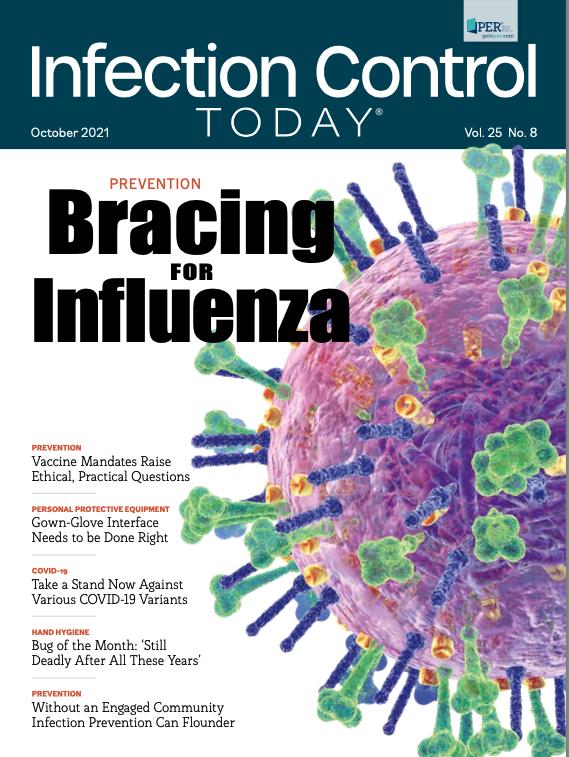Fight Infection With An Engaged Management Team
An actively engaged hospital management team can make the difference between success or failure when it comes to managing health care-acquired infections, a study states.
The effectiveness of infection prevention and control programs on hospital units depends on the oversight of an engaged management team, according to a study in the American Journal of Infection Control.1 Although the data gathering by investigators with Ohio State University occurred before the COVID-19 pandemic, the lessons learned about better control of health care–acquired infections (HAIs) such as catheter-associated urinary tract infections (CAUTIs) and central line–associated bloodstream infections (CLABSIs) can be applied to other pathogenic outbreaks, the study states.
“As clinical practices continue to evolve during the COVID-19 pandemic, hospitals should not lose sight of the importance of management practices in the context of infection prevention,” the investigators wrote. “Adapting these management strategies for leaders to accommodate the restrictions of hospital environments during the COVID-19 pandemic can ensure that focus on HAI prevention is maintained.”
Investigators interviewed 420 managers and frontline staff in 18 hospitals across the United States from September 2017 to November 2019 to better understand management’s role in preventing and controlling CAUTIs and CLABSIs. The exchanges were held in hospital conference rooms and unit break rooms, either 1-on-1 or in groups, during normal work hours and lasted an average of 28 minutes. All interviews were audio recorded, transcribed verbatim, and de-identified.
The transcripts were coded using a deductive dominant thematic analysis. Investigators first developed a preliminary coding method based on goal setting and support, leadership, strategic alignment and communication, and information sharing. The coding system was revised as new themes were located in the transcripts.
“Across hospitals and interviewees, 3 management practices were characterized as important facilitators of HAI prevention: (1) engagement of executive leadership, (2) information sharing, and (3) manager coaching,” the investigators wrote. “We found that visible executive leadership, efficient communication, and frequent opportunities to provide and promote learning from feedback were perceived to promote and sustain HAI prevention efforts.”
Because publicly available HAI data are available at the level of the hospital, not the hospital unit, the investigators were not able to judge the variable performance of the units and hence the management techniques involved.
The study includes excerpts from interviewees, all of whom testified to the importance of an engaged management. One interviewee said that was “really demonstrated by the commitment that leadership showed with a complete revamp of our hand hygiene program... When we collected our baseline data, we were about in the 50% in terms of hand hygiene [adherence], and we have been reliably like 89%, 90% now. We’ve come a long, long way but with a lot of work.”
Another interviewee said, “We have strong leadership support. And by the support I don’t mean permission, I mean active involvement. And I think that makes a huge difference. Well, for example, if we have a CAUTI or a CLABSI, and we’ll talk about that, leadership, first of all, wants the details. They want to know what’s going on. They work with our team.”
During the COVID-19 pandemic, the 3 successful management practices might have required some changes, such as fewer face-to-face meetings. Nonetheless, an active management improves the oversight of all HAIs as well as COVID-19 (which can also become an HAI).2
“In the context of the COVID-19 pandemic, leaders may have to think creatively to adjust their methods of engaging with hospital staff to respect the current rules and recommendations for maintaining physical distance,” the investigators wrote. “Leadership rounds, frontline staff huddles, and providing recognition to staff may look different in the present crisis, but the importance of maintaining leadership engagement cannot be underemphasized.”
In fact, communication was more important during COVID-19 given the fluidity of the situation and changing guidelines: “In this situation, sharing information via electronic medical record alerts, targeted emails, town halls, or webinars, rather than through face-to-face interactions, may be valuable approaches to communicate clinical practice changes while taking precautions to reduce in-person interactions,” the investigators wrote. “However, in choosing their communication strategies, hospital leaders should also be sensitive to the risk of information overload, especially given the volume and frequency of communications that have been necessary as the COVID-19 pandemic has evolved.”
References:
- McAlearney AS, Gaughan AA, DePuccio MJ, MacEwan SR, Hebert C, Walker DM. Management practices for leaders to promote infection prevention: lessons from a qualitative study. Am J Infect Control. 2021;49(5):536-541. doi:10.1016/j.ajic.2020.09.001
- Dyer J. How to keep COVID-19 from becoming a health care–acquired infection. Infection Control Today®. April 2, 2021. Accessed May 15, 2021. infectioncontroltoday.com/view/keep-covid-19-from-becoming-a-health-care-acquired-infection

Show, Tell, Teach: Elevating EVS Training Through Cognitive Science and Performance Coaching
April 25th 2025Training EVS workers for hygiene excellence demands more than manuals—it requires active engagement, motor skills coaching, and teach-back techniques to reduce HAIs and improve patient outcomes.
The Rise of Disposable Products in Health Care Cleaning and Linens
April 25th 2025Health care-associated infections are driving a shift toward disposable microfiber cloths, mop pads, and curtains—offering infection prevention, regulatory compliance, and operational efficiency in one-time-use solutions.
Phage Therapy’s Future: Tackling Antimicrobial Resistance With Precision Viruses
April 24th 2025Bacteriophage therapy presents a promising alternative to antibiotics, especially as antimicrobial resistance continues to increase. Dr. Ran Nir-Paz discusses its potential, challenges, and future applications in this technology.